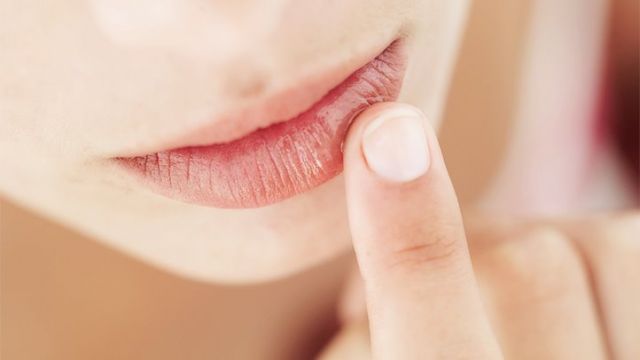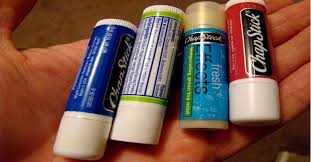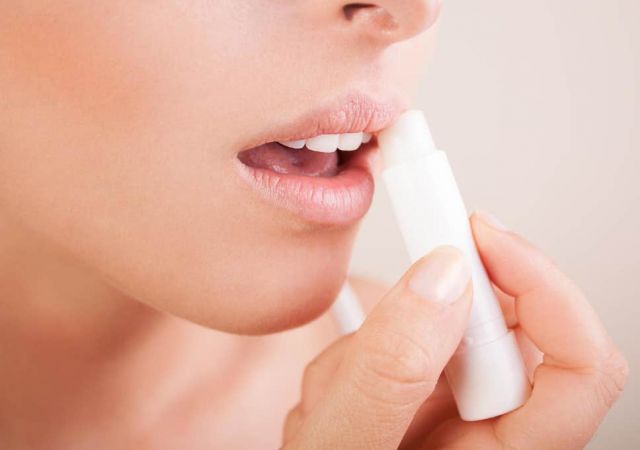The Product For Hydrating Your Chapped Lips Could Be Poisoning You (Video)
by N.Morgan

A brief look into the history of chap-stick takes us to the early 1880s when a physician by the name of Dr. C.D. Fleet produced the first lip balm for chapped lips in Lynchburg, Virginia in the United States of America. His lip balm looked like wick-less candlesticks that were covered with tinfoil.
Dr. Fleet did not believe his creation was a hit and worth his time and effort, so he sold his idea and the recipe for $5 to a man named John Morton.
The Morton’s had a successful chap-stick business and started off in their home and in their own kitchen where they made their own brand of chap-sticks which was pink in color and they molded their sticks using brass tubes.
By 1963 the Morton’s sold the rights of the owner of their business to H. Robbins Company.
In 1971, flavors were added to lip balm by H. Robbins Company and by 1981 sunblock was added to the chap-sticks. Petroleum was added to the chap-stick we are familiar with today and that was done way back in 1985.
You may be exposed to toxic chemicals when using Chapstick

1. Petroleum
2. Carnauba Wax
The leaves of the Brazilian Carnauba palm tree are the source of Carnauba wax. This wax can cause many skin reactions such as; acne, dry skin, rash, skin irritation, contact dermatitis, inflammation of the hair follicle and allergic reaction when applied topically. Yet this wax is being used in the production of chap-sticks.
3. Isopropyl Myristate
Isopropyl myristate is derived from Isopropanol and myristic acid and it is used in the treatment of hair lice infestation destroying them by dehydration. It does this by dissolving the wax coating that shields the lice. This compound is found in chap-sticks and it can clog the pores of the skin, stop the supply of oxygen to it and cause it to die as a result of oxygen deprivation.
4. Propylparaben
This is another component found in chap-sticks and the parabens have been known through research to act like estrogen the female hormone and this has also been linked as a cause of breast cancer in women.
British scientists discovered in a test of tissue samples from 20 women with cancerous breasts that parabens were present in samples of all the women. Men are also not off the hook as it was also discovered that men who used a lip balm with propyl parabens as a component had a decline in their testosterone production and in the ratio of the dose of parabens found.
5. Red 6 Lake
This petroleum product is known to cause brain tumor in lab rats, to lead to abnormal cell growth and hyperactivity in children. More worrying, it is a component found in chap-sticks.
6. Yellow 5 Lake
This is a petroleum product similar to red 6 lakes and it is known to cause the following ailments in people; diarrhea, cancer, hyperactivity, vomiting, allergic reactions, nettle rash, swelling of the skin and migraines when used.
Are you still holding on to that mass-produced lip balm? If you are at this point then you are either shell-shocked or illiterate.
.png)
Homemade Chapstick
Ingredients:
- Sweet almond or ¼ cup coconut oil
- Cocoa butter or ¼ cup mango butter
- Beeswax – ¾ cup
- Essential oil – 2 drops, you can use any of the following: (lavender, peppermint, cinnamon, ginger, rosemary, clove or wild orange).
- Cocoa powder or powdered herbs for color and added flavor – 1 teaspoon.
Instructions:
- Use a heatproof glass calibrated cup and add the coconut oil and mango butter into it.
- In a pan of gently boiling water melt the oil and butter by placing the heatproof glass calibrated cup in it.
- To the melted oil and butter mixture add ¾ cup of beeswax.
- With a stainless steel spoon stir the beeswax, it will melt completely and mix with the other ingredients. Be careful though as the glass will be quite hot.
- As the mixture cools at room temperature it will start to thicken.
- You can now add 2 drops of your favorite essential oil.
- Color your lip balm by adding a small number of powdered herbs to it.
- If you want some flavor to add the cocoa powder and stir until you can see no lumps.
- You then pour your mixture into clean lip balm tubes or tins. There is no problem reusing old ones as long as they are properly cleaned.
We have an affiliate program designed for content creators and affiliate marketers, who would like to sell this product, please click here for affiliate program details. Our affiliate program is designed to help you monetize your screen time.

References:
Comments
Post a Comment